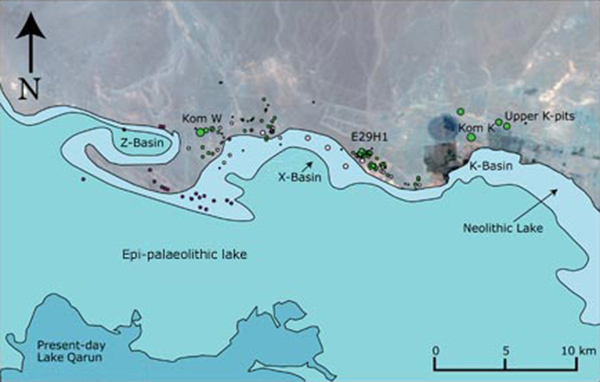
Earliest Agriculture
The Fayum is the area in Egypt where the earliest evidence of agriculture has been found. In two Neolithic settlements, known as Kom K and Kom W, domesticated wheat and barley have been discovered in hearths and in nearby grain storage pits, lined with basketry. These are 7000 years old and their preservation is spectacular.

Around 5000 BCE the people of the Fayum wove linen textiles, made objects from wood and flint and probably lived in tent-like structures of which no trace has been found. We did find personal adornments, such as half a bracelet made from shell from the Red Sea and ostrich eggshell beads.
The domestication of wild grasses into grain was developed in the Levant, and later adopted in Egypt. Whereas in Israel, Jordan and Syria people at that time lived a settled life in mud brick houses, the Fayum people seem to have been mobile part of the year, and used agriculture as just one of their means of subsistence. Fishing, hunting and limited farming went hand in hand with keeping sheep, goats and pigs.
Hunting and fishing
The proximity of the lake offered a wealth of nutritional resources which were exploited from from very early on. Many different fish species were not only caught by Neolithic humans, but in the same region evidence for lake shore exploitation dating to 9000 BCE was found. The Epipalaeolithic evidence in the Fayum is found mostly as surface scatters of flint tools, and faunal remains, with occasional hearths. One of the most extensive areas is known as E29H1, an ancient lake shore which was in heavy use during both the Epipaleolithic and Neolithic periods.

Sites and Seasons
Kom K
Season 2007
Season 2006
Kom W
Season 2008
Season 2007
Season 2006
E29H1
Season 2008

